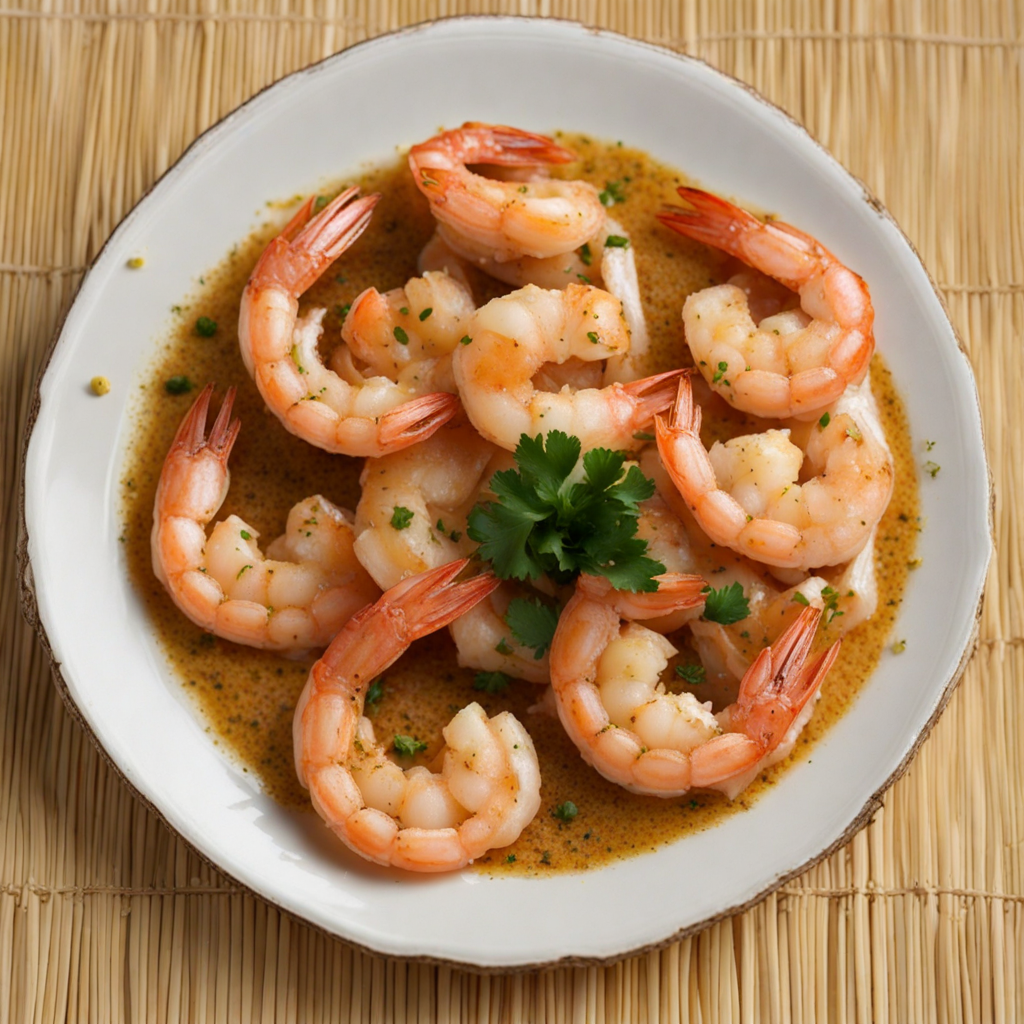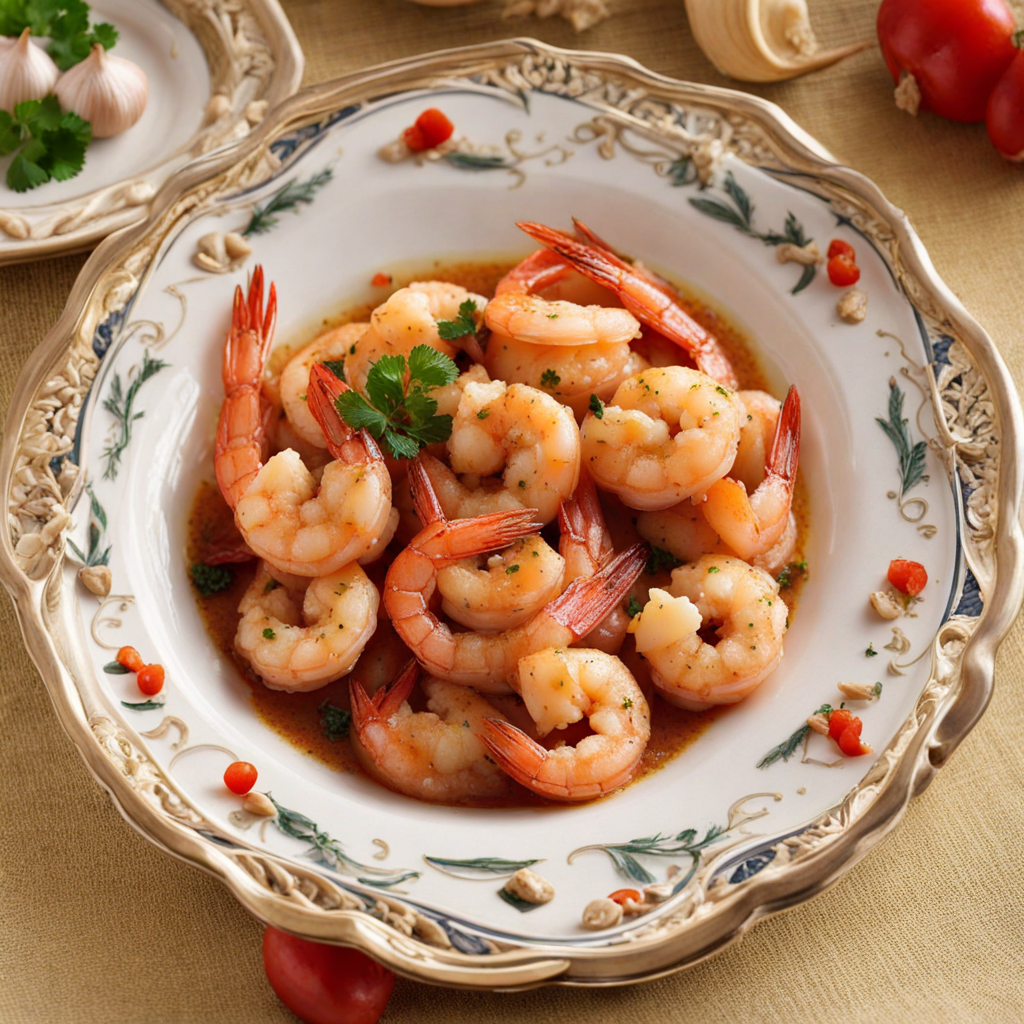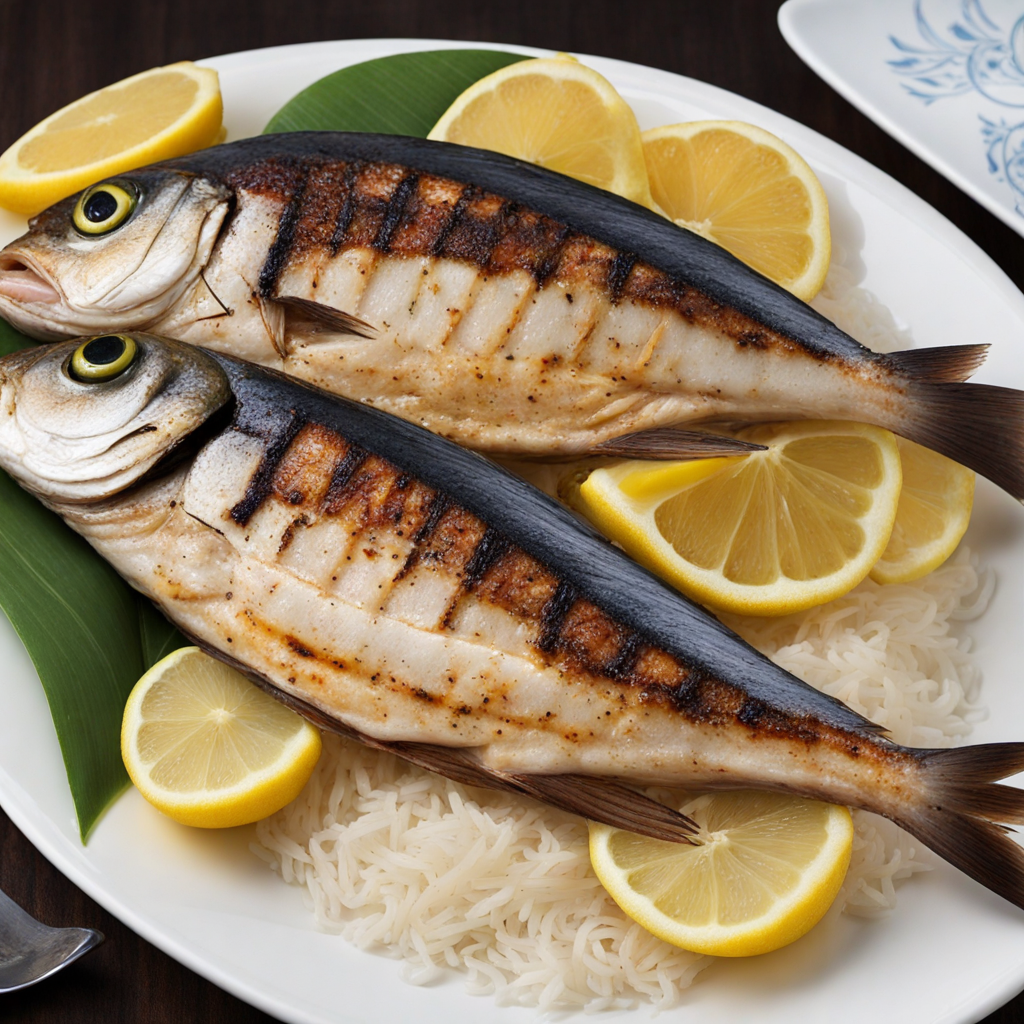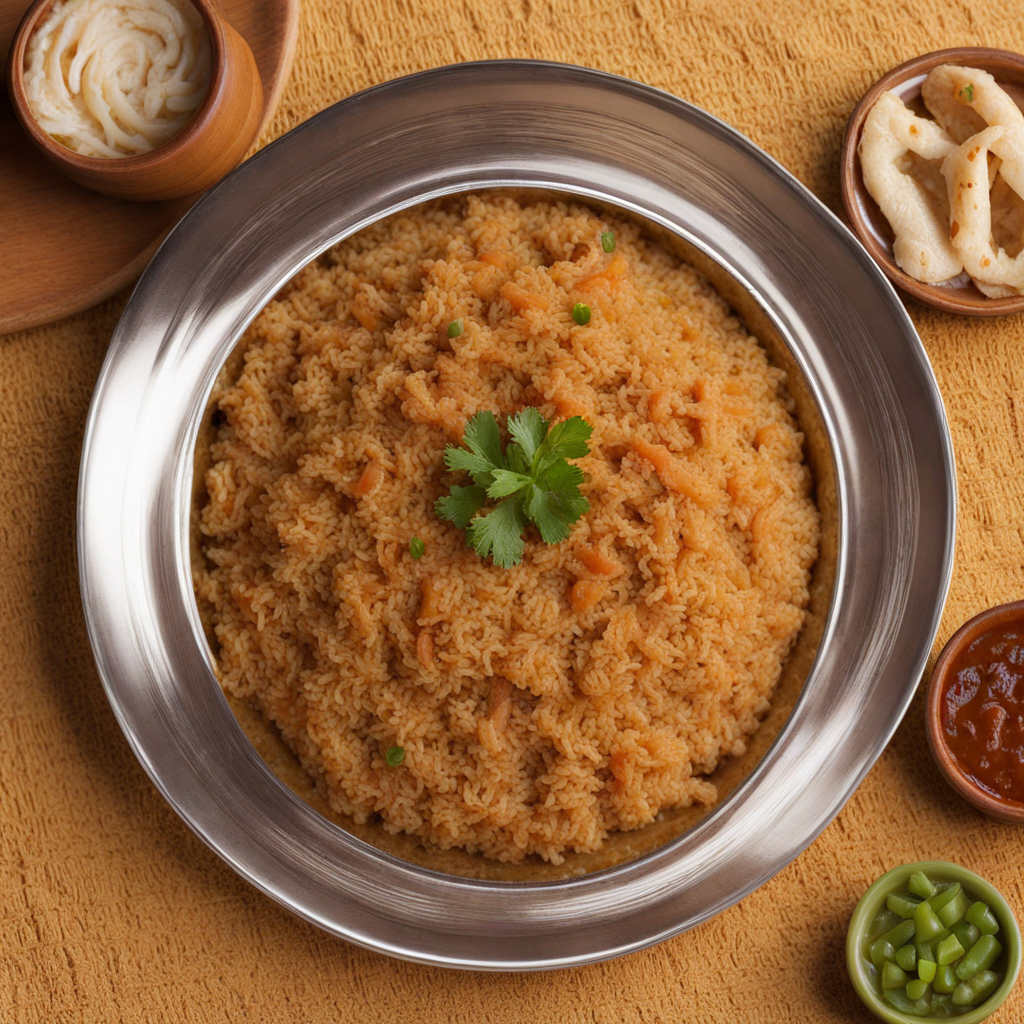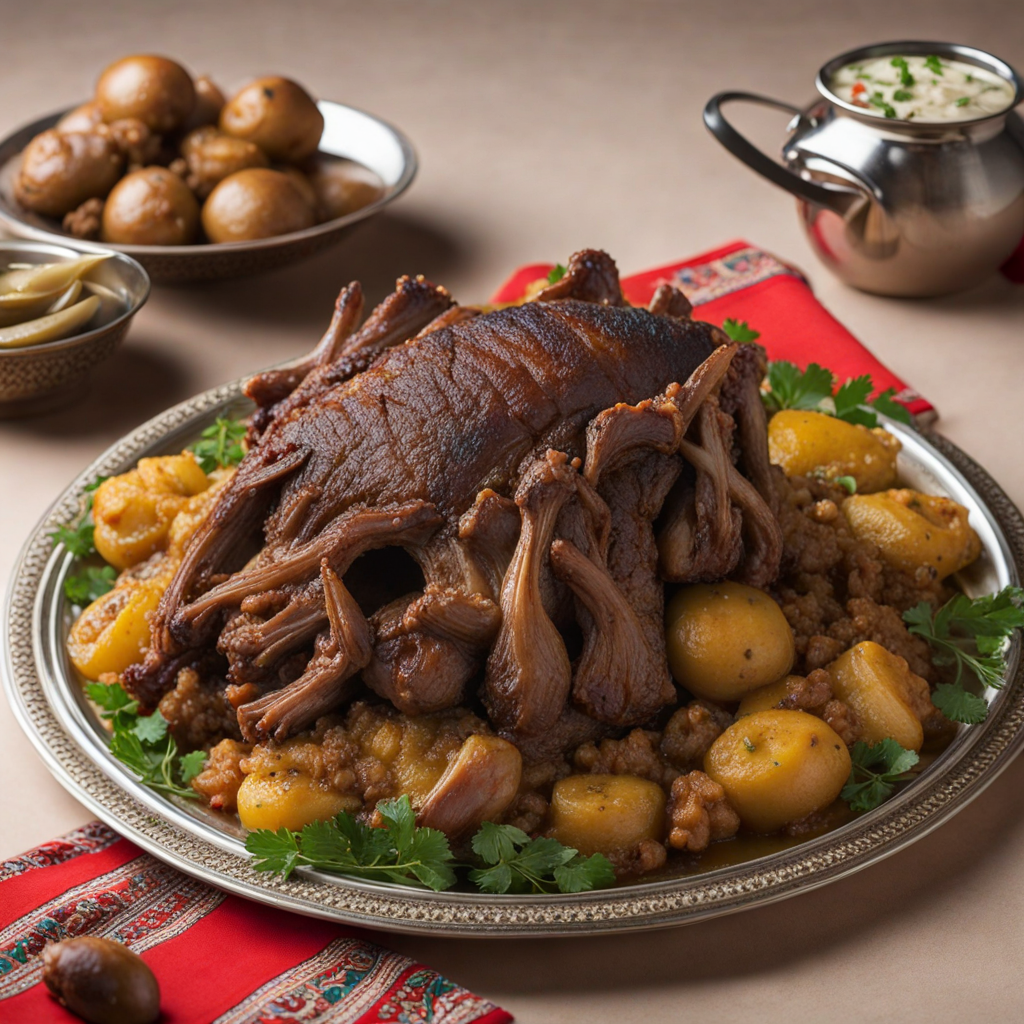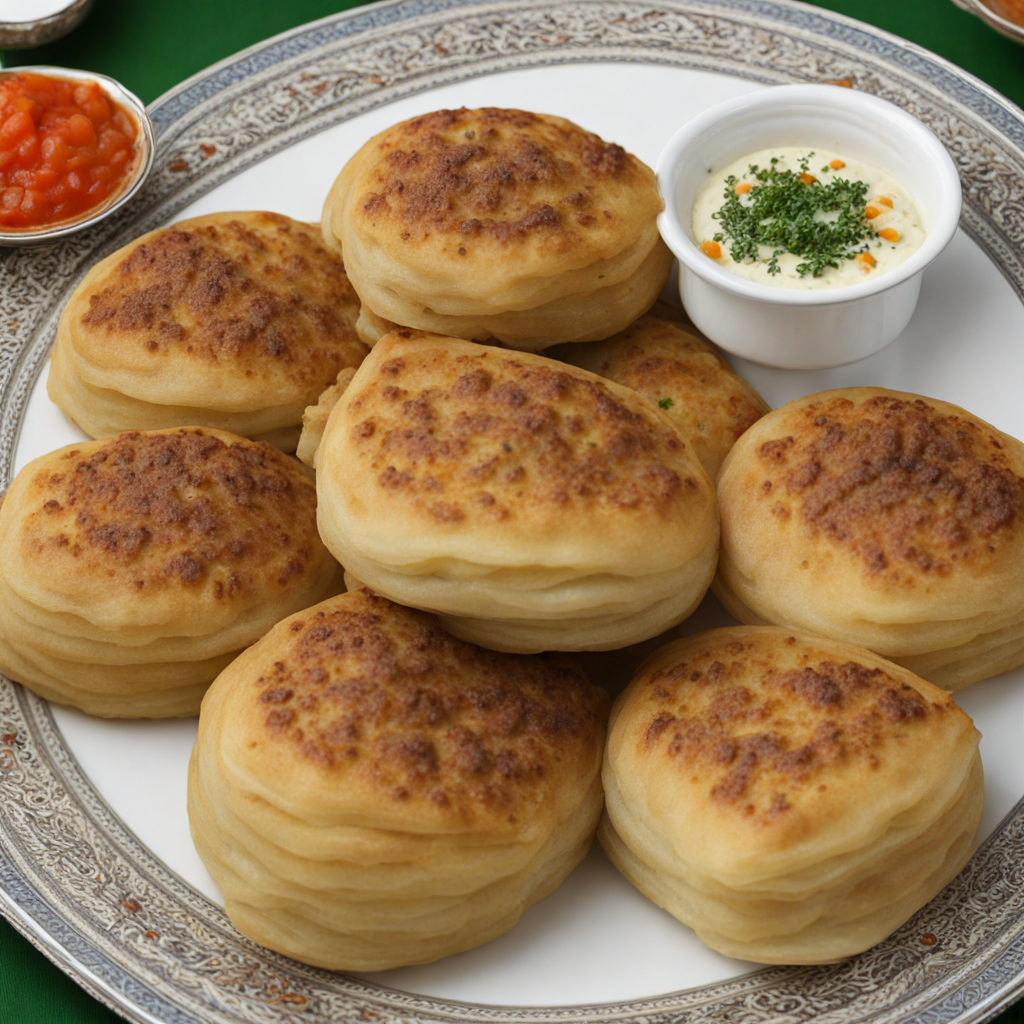Garlic Shrimp
'روبيان بالثوم', or garlic shrimp, is a beloved dish in Omani cuisine, celebrated for its simplicity and bold flavors. This dish epitomizes the coastal culture of Oman, where the Arabian Sea provides an abundant supply of shrimp and influences the culinary traditions of the region. The history of garlic shrimp in Oman can be traced back to the island's long-standing maritime heritage, where local fishermen would catch fresh shrimp and prepare them using the ingredients readily available in their surroundings. Over the years, the dish has evolved, incorporating influences from Middle Eastern and Indian cuisines, yet remaining true to its roots. The flavor profile of 'روبيان بالثوم' is a harmonious blend of sweetness from the shrimp and the pungent, aromatic punch of garlic. The dish is typically seasoned with a medley of spices, enhancing the natural taste of the shrimp while adding depth and warmth to the overall experience. Fresh herbs like coriander and parsley are often used as garnishes, adding a hint of freshness that balances the richness of the garlic. The use of olive oil or traditional ghee as a cooking fat contributes to the dish's luscious texture and enhances the overall flavor. Preparation of 'روبيان بالثوم' is straightforward, making it accessible for home cooks and a popular choice in Omani households. The process begins with selecting fresh shrimp, which are usually cleaned and deveined. The shrimp are then marinated in a mixture of minced garlic, lemon juice, and spices such as cumin
How It Became This Dish
The History of 'روبيان بالثوم' (Garlic Shrimp) in Oman #### Origin and Early Influences The dish known as 'روبيان بالثوم' (Garlic Shrimp) is a beloved culinary staple in Oman, reflecting the country’s rich maritime heritage and diverse cultural influences. The history of this dish can be traced back to Oman’s strategic geographical position along the Arabian Sea, which has historically made it a hub for trade and cultural exchange. The coastal regions of Oman have long been associated with fishing, and shrimp have been a significant part of the local diet for centuries. Seafood has been a dietary mainstay for the coastal communities of Oman, where fishing is not only a source of sustenance but also a vital economic activity. The proximity to the sea provided Omani people with a bounty of marine life, including various types of fish and shellfish. Among these, shrimp, known for their delicate texture and flavor, became particularly popular. The use of garlic in cooking is also notable in the region, influenced by trade routes that brought spices and culinary techniques from as far away as India and East Africa. #### Cultural Significance In Omani culture, food is more than just sustenance; it is a vital part of social gatherings, celebrations, and hospitality. 'روبيان بالثوم' embodies this sentiment, often served during family meals, festive occasions, and gatherings with friends. The dish is not only appreciated for its flavors but also for the communal experience it fosters. Sharing a meal of garlic shrimp is an expression of warmth and togetherness, reflecting the Omani ethos of hospitality. Garlic, a key ingredient in this dish, has held a significant place in Omani culinary practices due to its health benefits and flavor-enhancing properties. Traditionally believed to possess medicinal qualities, garlic has been used in various Omani dishes for its ability to enhance taste while also supporting overall health. The combination of garlic with shrimp creates a dish that is both delightful to the palate and nourishing to the body. #### Development Over Time As Oman experienced various waves of cultural and economic exchange due to trade, exploration, and conquest, its culinary landscape evolved significantly. The introduction of new spices, techniques, and ingredients influenced how traditional dishes were prepared and enjoyed. The popularity of garlic shrimp grew as it became a common dish among both local and expatriate communities. Historically, the coastal towns of Salalah, Muscat, and Sur were prominent centers for fishing and trade. The shrimp harvested from these waters were often prepared using simple, traditional methods that emphasized the natural flavors of the seafood. Over time, as Omani cuisine began to incorporate elements from other cultures—such as Indian, Persian, and African—'روبيان بالثوم' evolved to embrace a combination of spices and cooking techniques. In the late 20th century, Oman underwent significant socio-economic transformations with the advent of modernization and globalization. These changes influenced Omani cuisine, as traditional dishes were reinterpreted to suit contemporary tastes. The globalization of culinary trends led to the emergence of fusion dishes that incorporated international flavors, yet 'روبيان بالثوم' remained a steadfast favorite among locals and tourists alike. The rise of tourism in Oman has also played a role in the dish's popularity. Culinary tourism has prompted chefs and home cooks to showcase traditional Omani dishes, including garlic shrimp, to a broader audience. This has led to the establishment of restaurants specializing in Omani cuisine, where 'روبيان بالثوم' is often featured as a highlight of the menu. #### Preparation and Variations The preparation of 'روبيان بالثوم' is a testament to the simplicity and elegance of Omani cooking. The dish typically involves marinating fresh shrimp in a mixture of garlic, olive oil, and local spices, followed by sautéing until cooked through. The use of fresh, high-quality ingredients is paramount, as the dish relies on the natural sweetness of the shrimp and the robust flavor of garlic. While the basic recipe remains consistent, regional variations exist depending on local preferences and available ingredients. In some areas, additional spices such as turmeric or cumin may be included to enhance the flavor profile. Some cooks may also add a splash of lemon juice or a sprinkle of fresh herbs for an extra layer of taste. In modern times, 'روبيان بالثوم' has transcended its traditional roots, inspiring chefs to experiment with plating and presentation. Fusion interpretations may incorporate elements from other cuisines, such as serving the shrimp on a bed of saffron-infused rice or with a side of spicy dipping sauce. These variations reflect the ongoing evolution of Omani cuisine and its ability to adapt while honoring its heritage. #### Conclusion The journey of 'روبيان بالثوم' from a simple coastal dish to a symbol of Omani hospitality and culinary heritage is a fascinating narrative that encapsulates the essence of Oman itself. It showcases the country’s close relationship with the sea, the influence of diverse cultures, and the importance of food in social and familial bonds. As Oman continues to embrace modernization while preserving its traditions, dishes like garlic shrimp remain a cherished part of its culinary identity. In a world where culinary boundaries are increasingly blurred, 'روبيان بالثوم' stands as a testament to the power of food to connect people, celebrate heritage, and adapt to changing times. Whether enjoyed at a bustling restaurant in Muscat or a family gathering in a coastal village, this dish continues to evoke the flavors and traditions of Oman, making it a beloved staple for generations to come.
You may like
Discover local flavors from Oman


